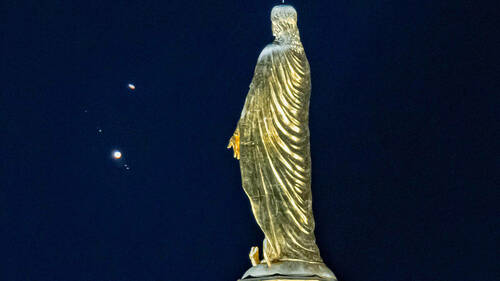
Grant Mathews, professor of physics at the University of Notre Dame, has said he feels a kindred connection to the ancient Magi — the Zoroastrian priests of ancient Babylon and Mesopotamia who “earnestly scanned the heavens for insight into the truth about the nature and evolution of the universe, just as we do today.”
What those Magi saw in the sky of their time is at the center of Mathews’ lecture and astrophysical perspective, “What and when was the Christmas Star?” The event will take place Dec. 10, 11 and 12 at the Digital Visualization Theater at the Jordan Hall of Science.
Scientists have pondered the origin of the Star of Bethlehem — believed to have led the Magi to the birthplace of Jesus — for centuries.
Mathews has studied historical, astronomical and biblical records for a better understanding of what the Magi may have actually seen that night. He believes it wasn’t a single star at all, but instead an extremely rare planetary alignment of the sun, the moon and Jupiter occurring in the constellation of Aires in 6 B.C. — which the Magi would have seen in the east.
According to Mathews, it will be 16,000 years before even a similar alignment is seen again — and the exact same alignment as what is believed to be the Bethlehem Star is not seen in calculations going out as far as 500,000 years.
“What and when was the Christmas Star?” will be held at 7 p.m. Friday, Dec. 10, and Saturday Dec. 11, and at 3 p.m. Sunday, Dec. 12, followed by a special presentation of “Season of Lights” by Loch Ness Productions. The event is free and open to the public.
To read more about Mathews’ research into the Bethlehem Star, visit nd.edu/stories/royal-beauty-bright/.